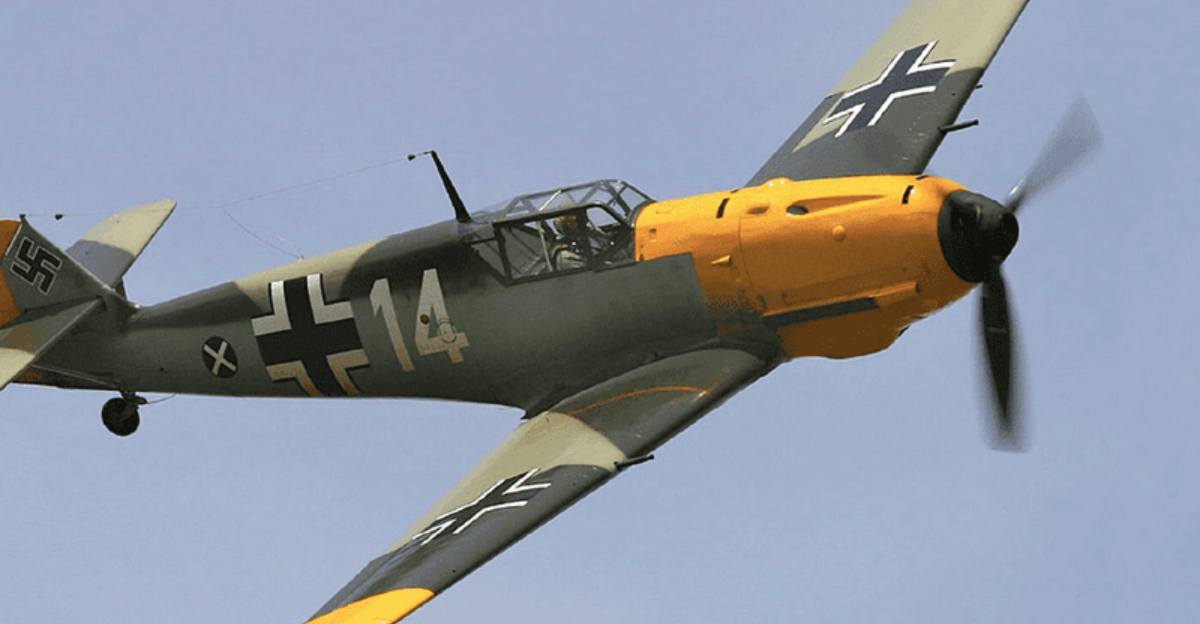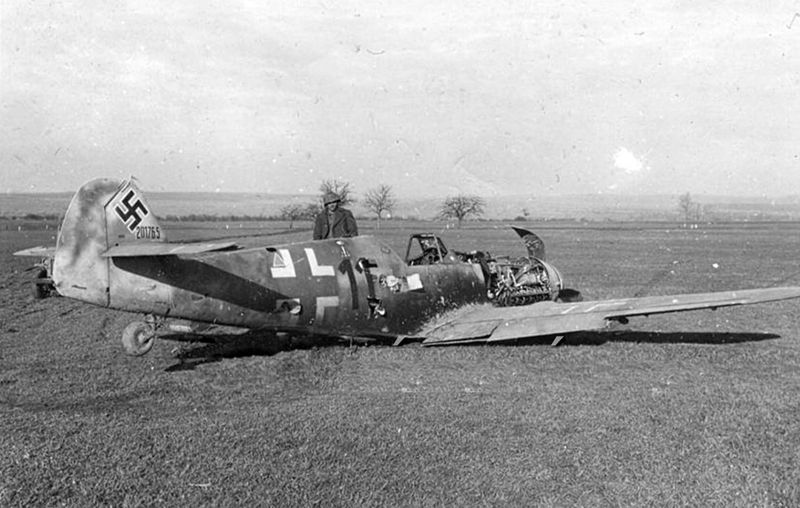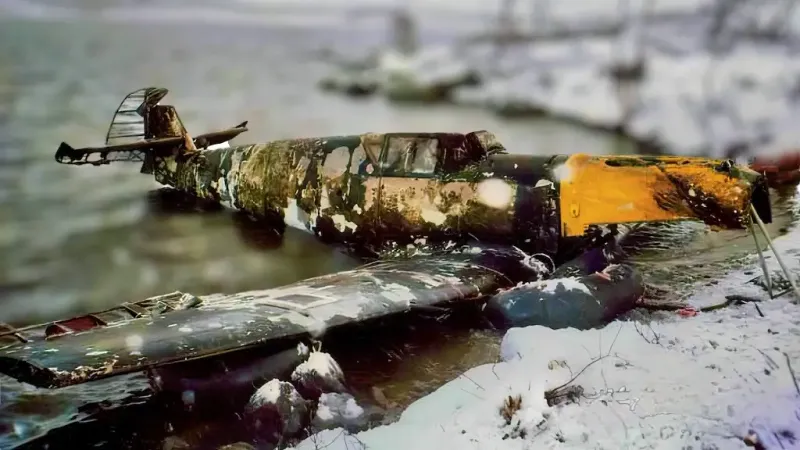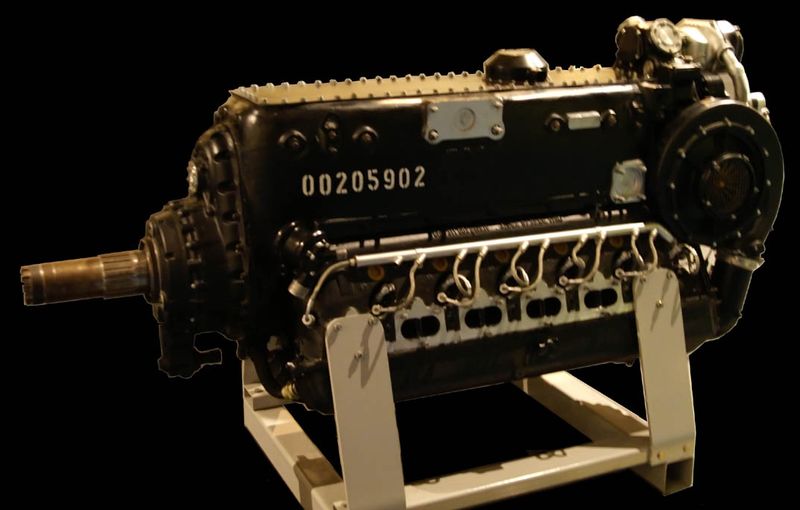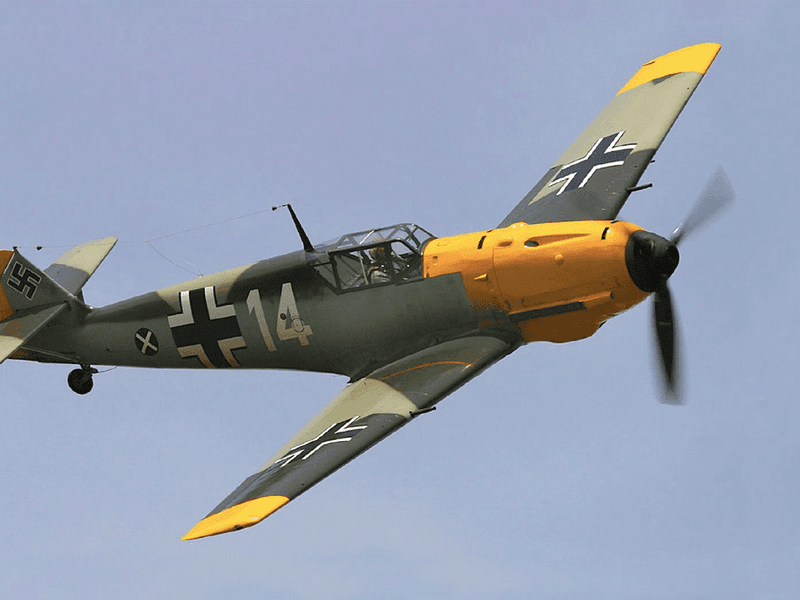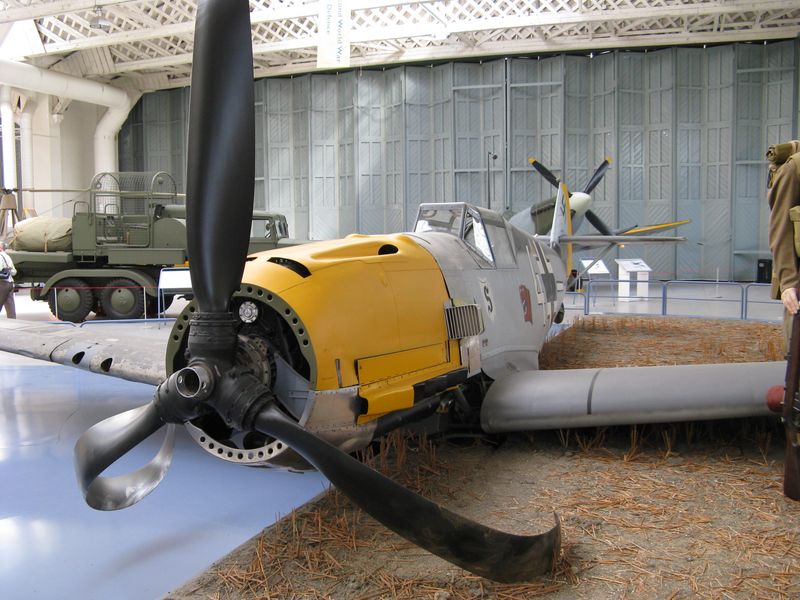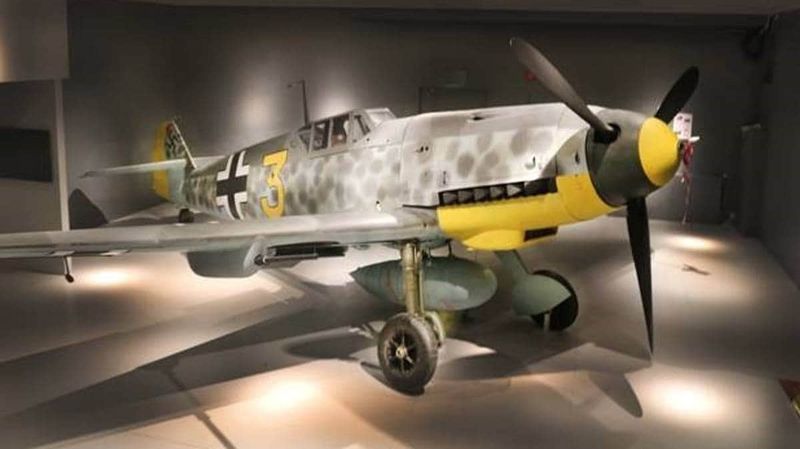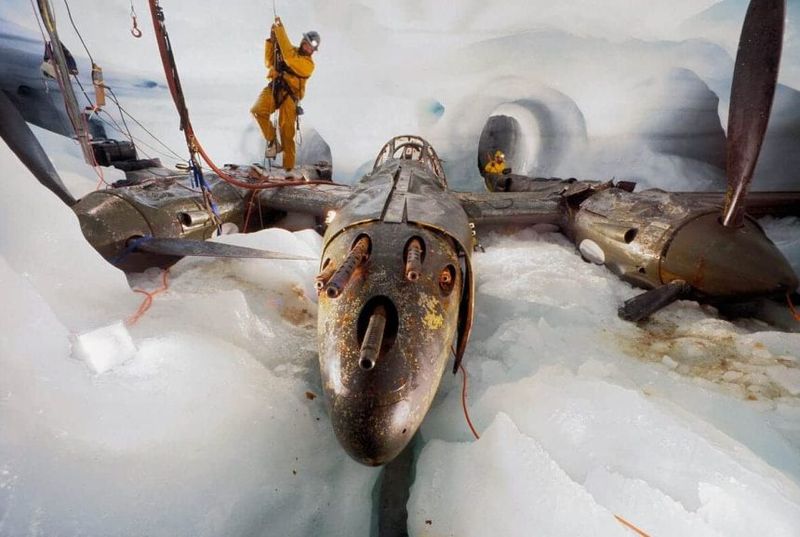Unveiling the story of the German Bf-109 fighter plane, which lay dormant beneath ice for six decades, offers a fascinating glimpse into history. Once a formidable fighter in World War II, the Bf-109 G-2 “Gustav” was preserved almost intact by the Arctic’s freezing temperatures. This article delves into ten compelling facts about the aircraft, from its crash landing during the war to its discovery in the modern era. Each fact reveals unique insights about the plane’s history, preservation, and eventual transition from a war machine to a museum artifact.
1. Shot Down in 1944 – A Pilot’s Miraculous Survival
In 1944, a German Bf-109 pilot faced an unexpected crisis. Due to engine failure, Lieutenant Hans-Werner Schröter crash-landed in Norway, part of Jagdgeschwader 5. Despite the crash’s severity, Schröter’s survival instincts kicked in, allowing him to escape unharmed.
The young lieutenant embarked on a grueling six-day journey back to safety, showcasing both resilience and determination. His incredible survival stands as a testament to human spirit and endurance during the harsh conditions of wartime. This crash landing, although unfortunate, was the beginning of a story that would span more than sixty years.
2. Lost in the Arctic – Preserved by Ice
The Bf-109’s final resting place was an icy glacier. Immersed in the Arctic’s relentless cold, the plane was preserved like a frozen time capsule. Unlike other World War II wrecks, which succumbed to corrosion, this aircraft remained untouched by the passage of time.
The extreme sub-zero temperatures acted as a natural preservative, keeping the original paint, cockpit instruments, and even the fuel intact. This rare preservation provides a unique glimpse into history, maintaining the aircraft’s authenticity and offering insights into 1940s aviation technology.
3. Discovered by a Meltwater River
The Bf-109’s emergence was as dramatic as its disappearance. In 2012, the glacier’s ice, slowly yielding to climate change, revealed the buried fighter. Meltwater streams cut through the frozen landscape, unveiling the plane’s metal debris.
Local residents stumbled upon this astonishing find and promptly notified aviation archaeologists. The discovery sparked excitement among historians and enthusiasts, eager to explore this time capsule of Nazi Germany’s aviation prowess. The plane’s unexpected appearance after decades underground reignited interest in World War II history and relics.
4. A Time Capsule of WWII Aviation
The Bf-109, a G-2 “Gustav,” was a marvel of WWII engineering. Despite its age, it remained a near-pristine artifact. The tail still bore swastika markings, and bullet holes told tales of fierce aerial battles.
Inside, personal artifacts like maps, gloves, and a survival kit were discovered, offering a personal connection to the pilot who once flew this mighty fighter. The preservation of these items provides an invaluable window into the past, making the aircraft a true time capsule of its era.
5. The Engine Was Still Sealed
A remarkable detail of the Bf-109 is its Daimler-Benz DB 605 engine. Encased in ice, the engine was perfectly preserved, with experts speculating about its potential restoration to working condition.
The preservation extended even to the 1940s-era oil and mechanical components. Such a well-preserved engine is a rare find, sparking interest among aviation historians and engineers, eager to understand its design and functionality.
6. A Race Against Time to Recover It
The plane’s recovery required urgency and precision. As the ice continued to shift, the team had a limited window to extract the Bf-109. Helicopters and thermal drills were deployed to carefully lift the wreckage from its frozen tomb.
This delicate operation was a race against time, combining modern technology with historical preservation. The successful recovery saved a significant piece of history from being lost forever beneath the Arctic’s icy grip.
7. Why Didn’t the Pilot Return for It?
Lieutenant Schröter never returned to his aircraft. After the crash, he assumed it was destroyed beyond recovery. Post-war, Schröter transitioned to a career as a commercial pilot, unaware that his Bf-109 lay preserved in ice.
The eventual discovery of the plane answered long-held questions about its fate but remained unknown to Schröter, who passed away before learning of its survival. The story of his Bf-109 adds a poignant chapter to his life and the plane’s legacy.
8. One of the Best-Preserved Bf-109s in Existence
Remarkably, the Bf-109 found in the Arctic is one of the best-preserved specimens of its kind. While most surviving Bf-109s are reconstructed from wrecks, this aircraft retains 80% of its original structure.
Even the tires, although brittle with age, were still inflated upon discovery. Its original winter camouflage paint remains unaltered, allowing visitors to appreciate its authentic wartime appearance.
9. Now a Museum Piece
After careful restoration, the Bf-109 was placed on public display at the Norwegian Aviation Museum. The exhibit aims to educate visitors about the aircraft’s history and significance.
The aircraft’s original winter camouflage paint was preserved, offering an authentic glimpse into its wartime appearance. This transformation from wreck to exhibit allows the Bf-109 to continue telling its story to new generations.
10. Could More WWII Planes Be Trapped in Ice?
Climate change raises intriguing possibilities about what other WWII relics might lie hidden within melting glaciers. In 2018, another Bf-109 was discovered in Russia’s Arctic, still armed with live ammunition.
The prospect of uncovering more such artifacts captivates historians and offers new opportunities for exploration. These buried treasures provide fresh insights into the past, waiting to be revealed by retreating ice.
